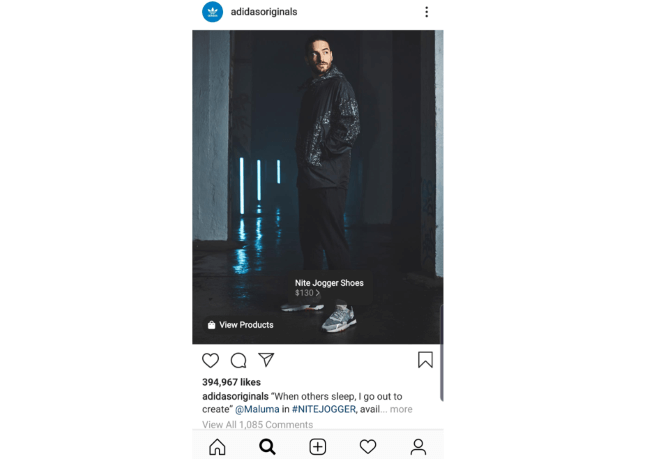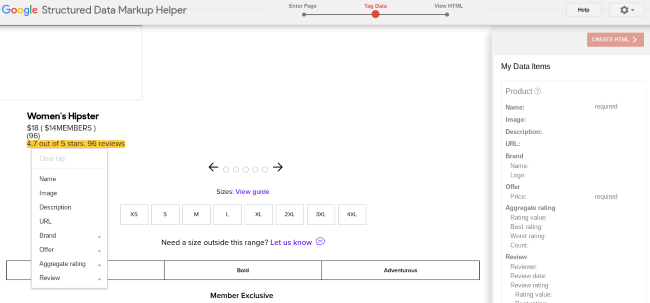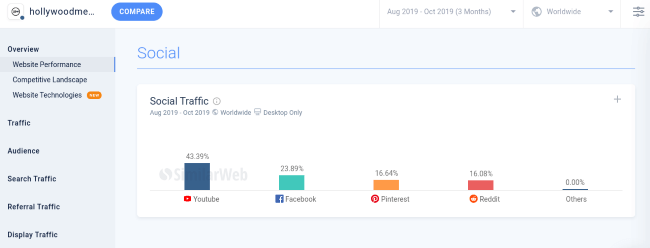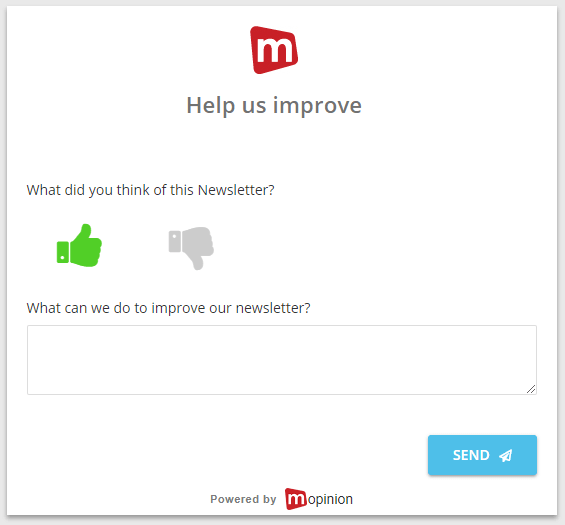If you hope to increase profits and grow your e-commerce business, the first thing you’ll need to do is attract more visitors to your site. Because, naturally, more visitors means more opportunities to convert visitors into customers. So what are the best techniques for doing so?
Since you probably have the basics down, we don’t need to tell you about the importance of SEO, Facebook ads, social sharing and so on.
In this guest post, Sleeknote’s Emil Kristensen dives into some more advanced and out-of-the-box techniques that will help you grow your website traffic:
1. Set Up Instagram Shopping
Instagram is an excellent channel to showcase your products as it has such a wide reach. Instagram Shopping is growing in popularity among brands and users. 130 million Insta users tap on shopping posts every month. This means there’s a real opportunity here to get a stream of new visitors to your site. What’s more, they’re qualified visitors who enjoy discovering new products.
Here’s how to set up Instagram Shopping:
Connect Your Product Catalog to Instagram
Firstly, you need to make sure you have a business account on Instagram and a connected Facebook page.
Then, set up a Facebook shop via your e-commerce platform (Shopify or BigCommerce) or add a shop section to your Facebook page, if you don’t already have one.

Image source
Once Instagram has approved your account for shopping, turn on shopping within your Instagram settings.

Free White Paper: Increasing Online Sales with Customer Feedback
Looking for new ways to boost online conversions and increase sales on your websites and apps?
Tag Products in Your Posts
When you upload an image, there will now be an option to “Tag Products” below the section for tagging people. Start typing in the name of your product and Instagram will grab the information from your Facebook shop.
You can tag up to five items and then share your post as you would normally. Your post will appear with a shoppable icon in the bottom left corner and when users tap they’ll see your product tag:

Tapping on the tag takes them to the next screen which features the product image and a button linked to the specific product page:

As you can see, this is a much better way than saying “link in bio” to get interested customers from Instagram to your e-commerce store.
2. Guest Posts on Authority Sites
Some think that guest posting is dead. But despite what people say, it still has a range of benefits if you do it correctly. Guest posts not only build trust and brand awareness, but they can also drive a bunch of referral traffic to your e-commerce store.
One e-commerce store saw a 1,340% increase in traffic using a campaign that focused on authority content, guest posting, and blogger outreach.
Here are some tips for finding guest posting opportunities:
Use Your Connections
The difficulty of guest posting these days is that some blogs expect you to pay for a link or sponsored post. It’s a bad idea to do this as you could be penalised by Google. Also, you shouldn’t have to pay, if you’re offering quality content.
So, the first place to seek out non-paid guest posting opportunities is via your existing connections. Perhaps you met a local blogger at a recent conference. Or you and a relevant influencer always like each other’s stuff on Twitter. Don’t be afraid to utilise your connections and reach out.
At the end of the day, if you don’t ask you don’t get.
Find Sites to Contribute to
If you don’t have many connections yet, search for blogs with a domain authority of at least 40. There are a couple of ways you can do this.
Firstly, you can use a Google search e.g. (keyword) + “write for us”:

Alternatively, find out where your competitors have guest posts using a competitor analysis tool. This will give you a list of sites that accept guest posts from brands like yours to reach out to.
To increase the likelihood of having your guest post accepted, try to forge connections with bloggers and influencers first. For instance, you could leave blog comments or share their posts on social media. This way, when it comes to reaching out, the blogger or site owner will already be familiar with you, especially if you’re an affiliate.
Finding guest posting opportunities will become easier over time as you make more genuine connections.
3. Add Structured Data for Rich Results
To do SEO well these days, you need to focus more on user experience. Structured data adds extra snippets of info to your search results. This information, e.g. stock levels, price, star rating and so on, is helpful to users. Which makes your results more clickable and therefore leads to more organic traffic.
Here’s how to add structured data to your e-commerce site:
Use Google’s Structured Data Markup Helper
Visit Google’s Markup Helper, select “Products” and enter your page URL:

You can then tag the pieces of data you wish to include in search results:

The tool will generate the necessary HTML to add to your e-commerce site.
Google also has a Structured Data Testing Tool to check that your structured data is functioning correctly.
Add Important Information
There are several useful snippets you can include:
- Price
- Availability
- Star rating
- Links to relevant category pages
- Specifications
- Breadcrumbs
You don’t have to tag all of this data, just the key information. The result will look something like this:

Help the searcher with useful information, as in the above example, and more users will click through to your site.
4. Perform Competitor Research
Through research, you can find valuable traffic sources that send visitors to competitor sites. You can discover what works for your industry and capitalise on that information.
Here’s what you need to do:
Find Your Competitors
You may have an idea of who your competitors are. But to be 100% sure, you’ll need to perform some analysis. Plug your main keywords into Google to see the top-performing sites.
Let’s say you sell movie memorabilia:

However, if your e-commerce site sells a range of products across different categories, this method isn’t going to work for you. Because there might be hundreds of keywords related to your site and products.
If this is the case then you’ll need to use an SEO tool, such as Ahrefs or SEMRush, that shows competing domains, specific to your site.
Identify Top Traffic Sources
In the same way, you use Google Analytics to establish your own top traffic sources, you can use tools to do the same for competitors.
SimilarWeb, for example, provides insights on top-performing marketing channels, search traffic, social traffic, referral traffic and more.
Check out this report for a movie memorabilia competitor:

It indicates that YouTube is a channel a memorabilia store could use to drive more traffic. And you can spy on your competitors in this way to gain real, data-driven insights as to where you can get more traffic from.
5. Create Short Social Videos
Video marketing is a great way to garner attention from potential customers. In fact, 53% of consumers say they’ve engaged with a brand after viewing one of their videos on social media.
And considering that you only have a short time to grab somebody’s attention on social media before they scroll onto the next post, creating short videos makes the most sense.
Here are some tips for creating engaging social videos:
Repurpose Your Best Content
Identify your top-performing blog posts. Here you have content that you already know resonates with your target audience. So, these posts are your springboard for video topic ideas that will likely drive traffic to your site. You can then take the most interesting points or fun facts from your posts to create videos. Or use a similar structure to your top-performing posts, e.g. turn a how-to article into a mini video tutorial.
In this example from Sephora, you have a lightning-fast tutorial that also showcases their products:

Image source
Emulate Popular Content
Trending topics are likely to perform well and drive more traffic to your site. It’s easy to discover what’s hot on each social channel in their respective trending sections. You can also find the most popular topics within your niche using a tool such as Buzzsumo.
Simply type in one of your keywords to view the most shared content:

This is a simple way to generate ideas for your own shareable video content.
All in all, the trick with video content is to anticipate what’s going to perform well so that you don’t waste your time and effort.
6. Share Content via Email
You might feel like you’re kickin’ it old skool with email. But 82% of marketing professionals consider email the most effective marketing channel for sharing content with prospective customers. The truth is, there are three times more email accounts than Facebook and Twitter combined.
And people are more likely to see your content via email than social media. So, email is certainly a powerful tool for driving more traffic to your site.
Here’s how to do it right:
Send Your Best Content
It’s tempting to think sales, sales, sales when putting together your email strategy. But you can also use email in the awareness stage, i.e. to share content with consumers that aren’t ready to buy yet. It can be difficult to get people to click through to your site…
So, be selective, choose your most valuable content, and most importantly, write a good subject line. For instance, blog posts that make customers’ lives better are always going to be super appealing.
In this example, Withings shares useful posts that aim to improve your health and happiness:

Image source
Segment Your Email Subscribers
By segmenting your email list, you can send information and content that’s most relevant to the users’ interests. The reason is simple—people are more likely to click on something that’s useful or interesting to them.
For example, you may sell products to people from different age groups. But a twenty-something customer may not be interested in the same articles as a forty-something customer. Most email marketing tools these days have segmentation options. You can separate your audience by demographics (age, location, education, etc.) and psychographics (interests, values, hobbies, etc.)
The more relevant and useful the content you send out, the more likely it is people will visit your site to view it.
Gather Feedback
To guarantee that you’re sending the most valuable and relevant content to users, you should measure the success of your email marketing campaigns and make improvements as you go along.
Add a short feedback form to the end of emails, using a simple question, such as, ‘Did you find this information useful?’ Your form may look something like this:

The ease and speed with which users can add their responses makes getting feedback all the more likely.
You can use a tool, such as Mopinion to gather and track responses to your email content, as well as the on-site content you share with them. Monitor how well your content resonates with users and tweak the kind of content you share, depending on the responses of your audience.
The more relevant and useful the content you send out, the more likely it is people will visit your site to view it.
7. Try Local Marketing
It’s interesting how online experiences are closely tied to real-life, in-person experiences these days.
For example, consumers still research products online even if they plan to buy the item later in-store. It’s helpful to adopt some local marketing techniques if you have both an e-commerce and brick-and-mortar store. Or just a brick-and-mortar store plus a website.
Here’s what to do to drive local traffic to your site:
Optimise Based on Location
You can set a location within Google Keyword Planner to find keywords that are popular locally:

Use these keywords to optimize your site or a landing page that’s geared towards customers in a specific region. You can also target locations in paid ads. Local marketing is often overlooked in the e-commerce world. But it’s worth trying out as you could be missing opportunities to drive traffic to your site and foot-traffic in-store.
Final Word
The first step towards increasing conversions is increasing traffic. And if you want to step up your game, you need to go beyond the basics. You should find new ways to utilise marketing channels to attract more visitors to your e-commerce store.
For example, adding shopping integrations to social channels. Or sharing useful content via email instead of the sales-y stuff that everybody else does.
Furthermore, you need to find new channels from which to drive traffic. Perhaps, you haven’t considered guest posting or local marketing previously. And competitor research will certainly give you ideas for new channels to target.
All in all, you need to use advanced and innovative techniques to drive more traffic in the competitive e-commerce landscape.
About the Author

Emil Kristensen is the CMO and co-founder of Sleeknote: a company that helps e-commerce brands turn their website browsers into buyers—without hurting the user experience.
Ready to see Mopinion in action?
Want to learn more about Mopinion’s all-in-1 user feedback platform? Don’t be shy and take our software for a spin! Do you prefer it a bit more personal? Just book a demo. One of our feedback pro’s will guide you through the software and answer any questions you may have.








